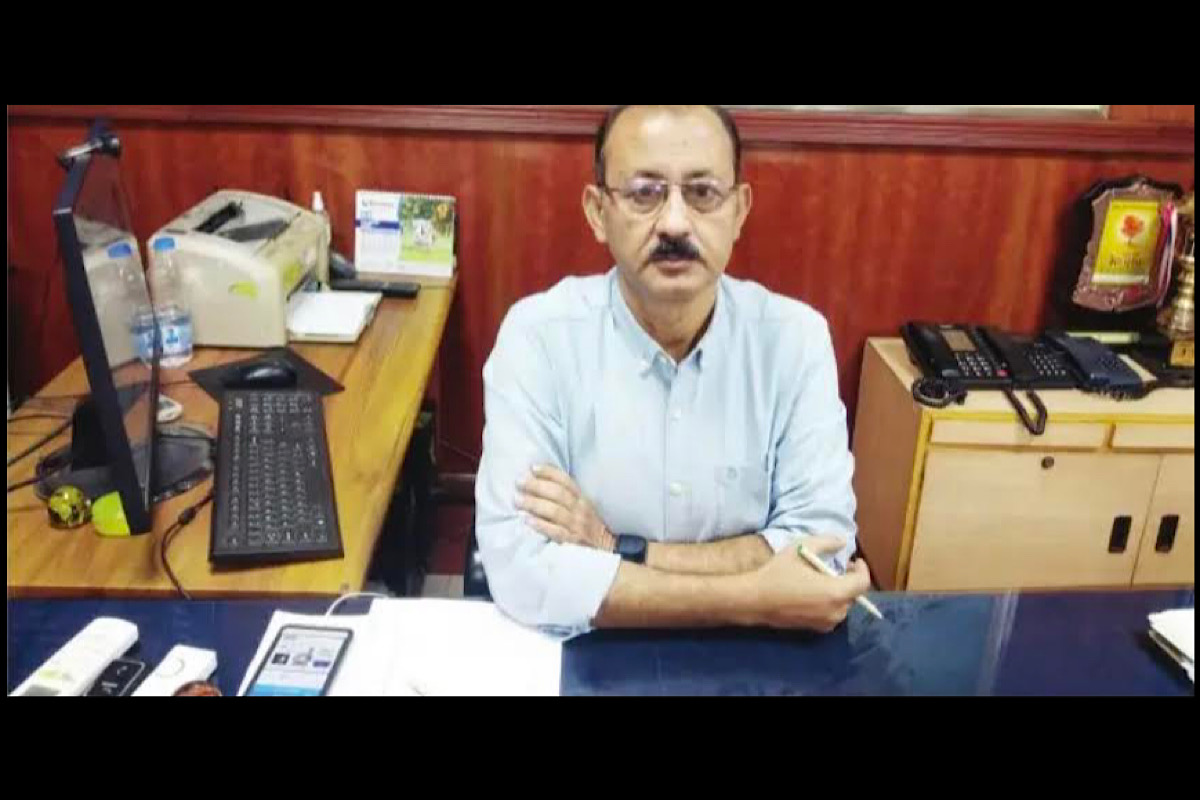Tea Land Policy sparks debate, CM clarifies
Chief minister Mamata Banerjee, speaking to the media in Kolkata yesterday, clarified that only 15 per cent of tea plantation land will be used for tea tourism and local employment.
As recent forecasts will tell you, there has been a lot of improvement in the accuracy of weather forecasts provided by the IMD. There has been an increase in the number, class and type of observatories. Communication speed has been on a rise, too.

The Kolkata-based Deputy Director General IMD, Sanjib Bandhopadhyay (photo:SNS)
The India Meteorological Department is the principal agency of the government in matters relating to meteorology and allied subjects. Established in 1875, it is tasked with both forecasting and research. The Kolkata-based Deputy Director General IMD, Sanjib Bandhopadhyay talks to Anwesha Santra, about weather patterns and climate change.
Q. There is still a lot of confusion among people regarding climate and weather. Could you please discuss the two?
Advertisement
A. Weather is a daily occurrence, and we can predict and forecast how the weather will change over the next few days. However, climate service is a long-term average. Climate is defined as any aspect of the weather that conforms to local standards. For instance, December should be cold and May should be hot. In April, thunderstorms are anticipated. This is typical.
Advertisement
Q. Do you believe that the IMD’s weather predictions have been more accurate recently?
A. As recent forecasts will tell you, there has been a lot of improvement in the accuracy of weather forecasts provided by the IMD. There has been an increase in the number, class and type of observatories. Communication speed has been on a rise, too. The computing speed provided by our machines has also increased. The overall understanding of the subject of atmospheric physics has developed over the recent years. The IMD’s improved weather forecasting accuracy has, by far, been attributed to the use of numerical weather models.
Q. There has been a lot of talk about climate change. How can one describe climate change?
A. The general change that may be seen when examining long-term climatic data is referred to as climate change. A few years of weather that is marginally different from the norm cannot be considered a climate shift. Long-term data is what one needs to look at. 100–200 years’ worth of data, as an example. Only then can something be referred to as climate change if there are long-term, observable changes in the meteorological parameters. Temperature is the main observation right now. Climate change is real and is happening. There shouldn’t be much doubt about it. The temperature has been rising. The reason behind it is carbon emission. The more the concentration of carbon in the atmosphere, that is, the more greenhouse gases in the atmosphere, the higher the rise in the mercury level. There has been no one-to-one correlation in other weather parameters like rain, which does not entirely depend on temperature. Rain requires temperature, moisture, water vapour, windspeed, wind direction, and quite a few other parameters. Although, it can be said that the natural variability is increasing. Every year, the amount of rain varies; some years see more, while others see less. When it comes to the temperature, some years are colder than others. There is a natural or inherent variability. From current observations, it is safe to say that this variability is on a rise, which is why we are confronting extreme weather conditions. Similar to the heat waves we are currently experiencing, more of these circumstances are to come.
Q. Does data suggest that there has been an increase in the number of cyclones over the years?
A. The coasts are more vulnerable to cyclones. If we look at the current data, say 10 years, it might seem that there has been an increase in the frequency of cyclones. We suffered Bulbul in 2019, Amphan in 2020, Yass in 2021 and Mocha in 2023. These cyclones originated in the Bay of Bengal and taking a look at 10-year-data, it’s apparent that there has been an increase in the number of cyclones. However, if you look at the data of the last 100 years, you’ll find there is no such significant trend. At the same time, if you take a look at the intensity, it is definitely increasing. The intensity, in both the long-term and short-term data, of the number of supercyclones, extremely severe cyclones, very severe cyclones is increasing. That may be one of the reasons for sea or ocean warming. Much like land warming, the temperature of the sea is also on the rise. This in turn may be one of the reasons for the increase in intensity of cyclones over the years. However, one cannot draw a conclusion solely based on temperature, given there are other parameters too. Because of warming, there is a rise in the intensity of cyclones. But if the other parameters (windspeed, pressure fall, etc) are not favourable, it might not increase.
Q. Kolkata witnessed loo-like conditions in April. What does data suggest about that?
A. If you take a look at the heat index, for example, if the actual temperature is 35 degrees, the feel is like 38 degrees. It depends on humidity, and other factors. If there is wind, there’s less discomfort.
Q. El Nino is supposed to return this year. What can be expected?
A. Monsoon in India is somewhat affected by El Nino. The years when there are the effects of El Nino, there’s lesser rainfall in India. However, the Indian monsoon does not entirely depend on El Nino. There are other factors like the Indian ocean dipole. So, even if there’s the effect of El Nino, due to this dipole, data suggests that India received a good amount of rainfall. There’s a 90 per cent chance of El Nino this year, which might affect our monsoon. However, if the other factors are favourable, there is a chance of a good monsoon.
Advertisement